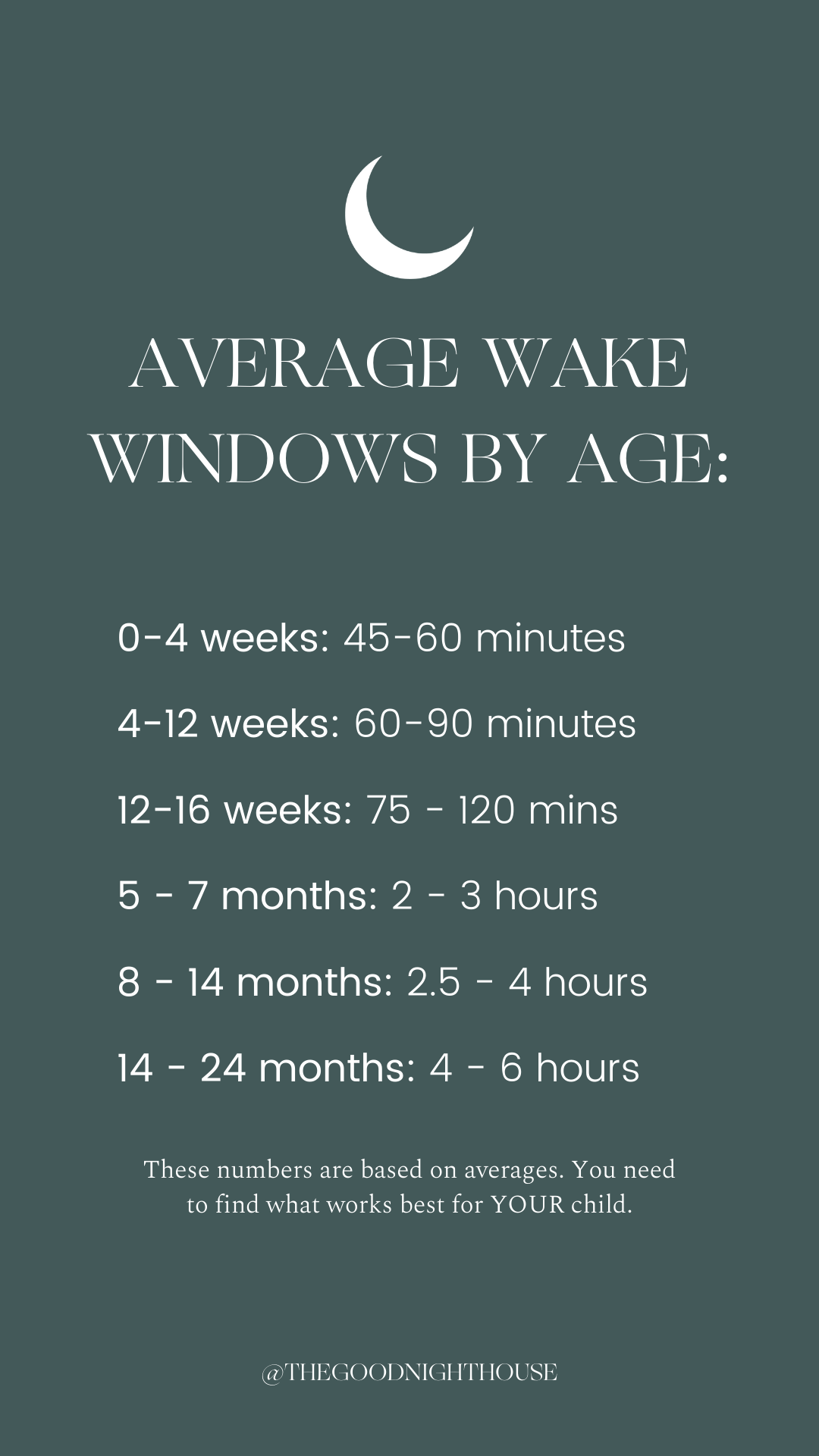Wake Windows
What are Wake Windows?
Every baby and child has a capacity for how long they can handle staying awake between naps (aka Wake Window). When they’re born, their capacity for staying awake is pretty small. As they grow, the length of time they can handle being awake increases.
Many parents mistakenly think that if they keep their baby or child awake for extended periods of time during the day, their baby will sleep better at night. This is actually a myth!
“The more tired a baby is, the more overstimulated and harder to settle they become. ”
Over-tiredness in babies and children looks like hyperactivity (for babies it looks like crying, screaming, and being unable to settle for sleep). For toddlers, it looks like them jumping off the walls.
Babies typically won’t just fall asleep when they’re tired. It’s our job to offer them naps at the right times, under the right conditions.
Click the video below to hear Jessie explain more about Wake Windows:
The Science of Wake Windows: Homeostatic Sleep Pressure
When we wake up for the day, a substance in our brains called Adenosine begins to rise. It rises every hour, increasing our sleep pressure (or need to sleep). The pressure continues to build until it needs to be released.
We release the pressure by sleeping.
One way to think of it is to picture carrying a backpack all day long. As the day passes, rocks are added to your pack. By nighttime, your pack is so heavy you need to take it off and sleep. When you wake up the next morning, your pack is empty and the cycle starts again.
In babies, the pressure builds and needs to be released more often throughout the day, which is why they need frequent naps.
If their sleep pressure starts to overflow, they become overstimulated and are extremely hard to settle for sleep. They have a hard time falling asleep and staying asleep.
If their sleep pressure isn’t high enough, they won’t be tired enough to fall asleep and stay asleep.
Click HERE to get your child’s perfect daily schedule!
Micro Naps and Sleep Pressure
Something to keep in mind is that even a very short micro nap will release some of your baby’s sleep pressure. A micro nap can make it extremely hard for them to be tired enough to then take a full nap.
Example: You drive home from grandma’s house 30 minutes before nap time and your baby falls asleep during the last 10 minutes of your drive.
You might assume that 10 minutes isn’t nearly enough time for your baby to feel rested. Unfortunately though, even that short 10 minutes of sleep has probably released enough of their sleep pressure that they won’t be ready for their nap right away.
This isn’t meant to discourage you from ever leaving your house. We think it’s good to know so you aren’t stressing yourself out trying to get your baby to take a nap when they really just don’t have enough sleep pressure to physically feel tired enough to sleep.
The solution to the 10 minute car nap is to wait 30-60 minutes before offering them their full nap. This gives their sleep pressure time to build back up.
What is my child’s wake window?
Knowing the average wake window for your child’s age is the first step to determining how long your baby or child’s wake window is.
Average Wake Windows by age:
0-8 weeks: wake windows 45-60 minutes
8-12 weeks: 60-90 minutes
12-16 weeks: 75 - 120 minutes
5 - 7 months: 2 - 3 hours
8 - 14 months: 2.5 - 4 hours
14 - 24 months: 4 - 6 hours
Please remember, wake windows are AVERAGES.
Every baby is going to be a little different. Start with the recommended wake window for your baby and then adjust as needed after you take some time to watch how they respond.
Wake windows grow with your baby, so you’ll need to re-assess their wake windows each month.
If you’re looking for a more detailed schedule for your child based on their age, click here to use our FREE Schedule Generator.
Wake Window Tips:
Once your baby is sleeping better or longer stretches during the night, they may be able to extend their wake windows a little more.
For young newborns, their wake window begins as soon as they wake up. They don’t need to be “worn out” before their next nap - their body’s are naturally ready for sleep after 45-60 minutes.
For older babies and toddlers, their wake windows begin when you get them out of their cribs (i.e. if they wake at 4am, you are not starting your day at 4 am!).
Ensuring your baby has adequate wake time to build up enough sleep pressure for their next nap, but not so much pressure that they’re overstimulated and overtired is one of the primary keys to great naps and better night sleep!
If you need more help with wake windows or would benefit from 1:1 help from us, click HERE to schedule your free 15 minute discovery call with us!
If you’re pregnant or have a newborn 0-12 weeks and want to set your baby up for the best possible sleep, click HERE to take our Online Newborn Class.



